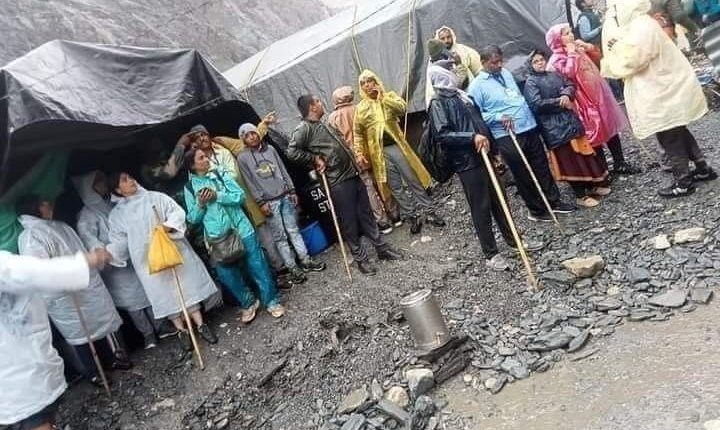What Actually Caused Amarnath Flash Floods That Killed At Least 16 People?

Pahalgam: Flash floods near the Amarnath cave shrine in Jammu & Kashmir on Friday resulted in at least 16 pilgrims losing their lives several others injured.
A cloudburst was said to be the cause of the sudden surge in waterflow.
However, India Meteorological Department (IMD) has said that the incident may have occurred due to a highly localised rain event, rather than a cloudburst, PTI reported.
According to IMD director general Mrutyunjay Mohapatra, the deadly flash floods could well have been triggered by rainfall in the higher reaches of the mountains near the shrine cave.
IMD further stated that there was 31 mm of rainfall between 4.30 pm and 6.30 pm on Friday near the shrine, which is not enough to be considered a cloudburst.
A rain event is categorized as a cloudburst if a weather station receives 100mm of rain in 60 minutes, explained IMD.
IMD has a weather station near Amarnath cave that gives forecasts for the benefit of pilgrims during the yatra. The inaccessible mountains surrounding the shrine, though, don’t have such weather monitoring stations.
Sonam Lotus, director of Regional Meteorological Centre, Srinagar, echoed Mohapatra’s views.
Friday’s incident. Sonam said, was a result of a “highly localised cloud” that had formed only over the holy cave.
“Such rain had happened earlier this year as well,” PTI quoted her as saying.
National Disaster Response Force (NDRF), State Disaster Response Force (SDRF) and the Army are still conducting rescue operations, more than 24 hours after the incident.
Over 15,000 people have been rescued so far, with seriously injured persons being airlifted to a makeshift hospital in Baltal base camp, from where they will be moved to Srinagar for further treatment.
Around 40 people are still missing.
IMD has predicted fresh flash floods in the region.

Comments are closed.